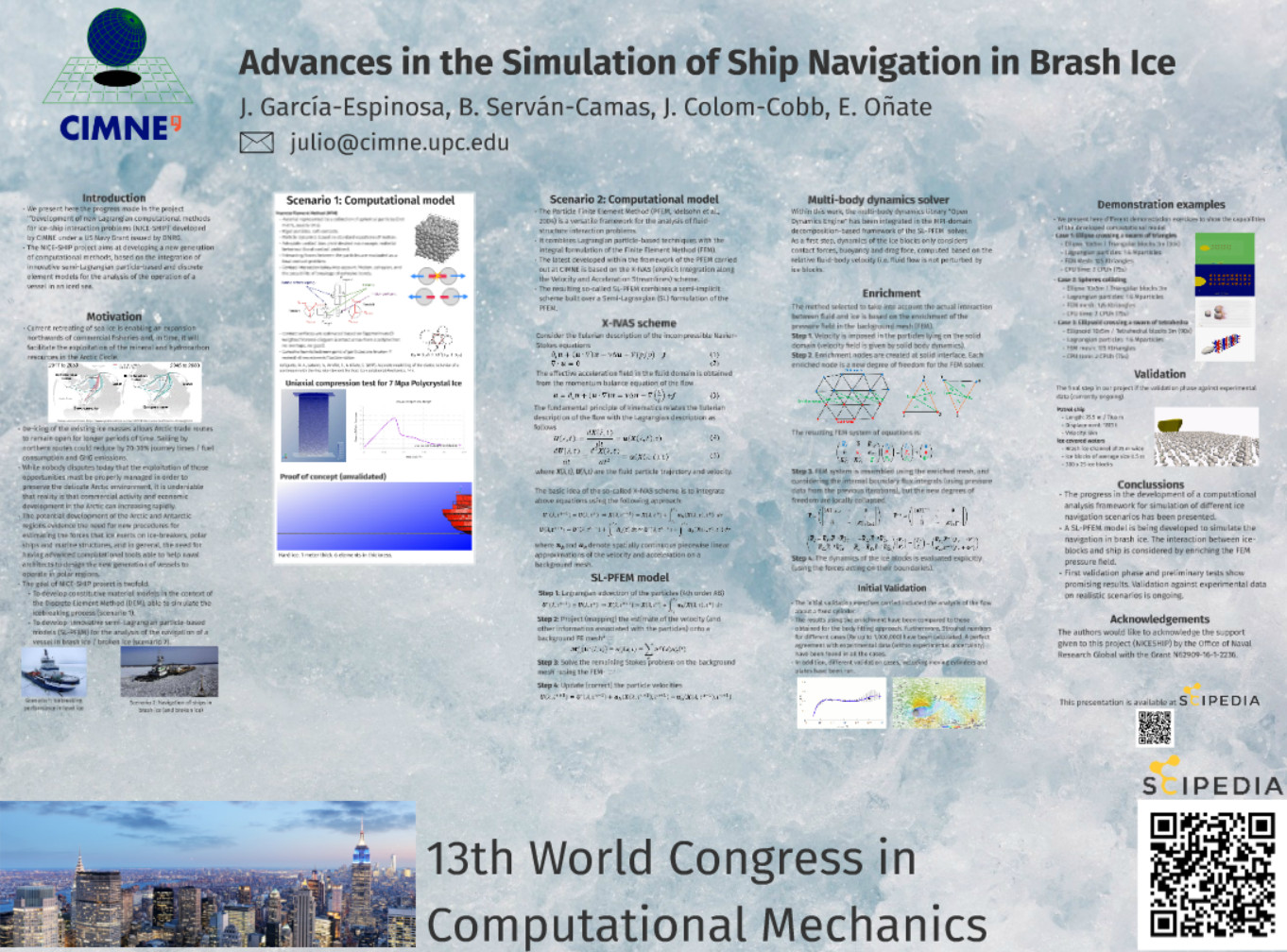Abstract
Brash ice is the accumulation of floating ice made up of blocks no larger than two meters across. Navigation in brash ice is becoming more usual as new navigation routes are being opened in the Artic regions. This navigation brings new concerns regarding the interaction of ice blocks with the ship. Developments are presented towards the simulation of this navigation condition including the interaction among the ship and the ice blocks.
This work presents the advances in the development of a computational tool able to simulate this problem, based on the coupling of a Semi-Lagrangian Particle Finite Element Method (SL-PFEM) with a multi rigid-body dynamics tool. The Particle Finite Element Method [1] is a versatile framework for the analysis of fluid-structure interaction problems. The PFEM combines Lagrangian particle-based techniques with the advantage of the integral formulation of the Finite Element Method (FEM).
It has been shown [1][2] to successfully simulate a wide variety of complex engineering problems, e.g. free-surface/multi-fluid flows with violent interface motions, multi-fluid mixing and buoyancy-driven segregation problems etc.
The latest development within the framework of the PFEM is the X-IVAS (eXplicit Integration along the Velocity and Acceleration Streamlines) scheme [2][3]. It is a semi-implicit scheme built over a Semi-Lagrangian (SL) formulation of the PFEM.
In this work, the SL-PFEM model has been coupled with a multibody dynamics solver, able to handle the interactions between thousands of bodies, representing the different ice blocks. The interaction between the fluid flow and the ice blocks is performed by enriching the finite element space at the boundaries of the different blocks.
Presentation
This presentation was held at the 13th World Congress in Computational Mechanics in New York on July 26th, 2018.
Acknowledgments
This work is part of the research project NICESHIP sponsored by the U.S. Office of Naval Research under Grant N62909-16-1-2236. This support is highly appreciated.
References
1] P Nadukandi, B Servan-Camas, PA Becker, J Garcia-Espinosa, Seakeeping with the semi-Lagrangian particle finite element method. Computational Particle Mechanics 4 (3), 321-329
2] Idelsohn, S., Oñate, E., Del Pin, F. “The particle finite element method: a powerful tool to solve incompressible flows with free‐surfaces and breaking waves”. International journal for numerical methods in engineering, vol. 61-7, pp. 964-989, 2004.
3] Idelsohn, S.R., Marti, J., Becker, P., Oñate, E.: Analysis of multifluid flows with large time steps using the particle finite element method. International Journal for Numerical Methods in Fluids, Vol. 75, No 9, 2014, pp. 621–644.
Document information
Published on 19/07/18
Submitted on 19/07/18
Licence: CC BY-NC-SA license
